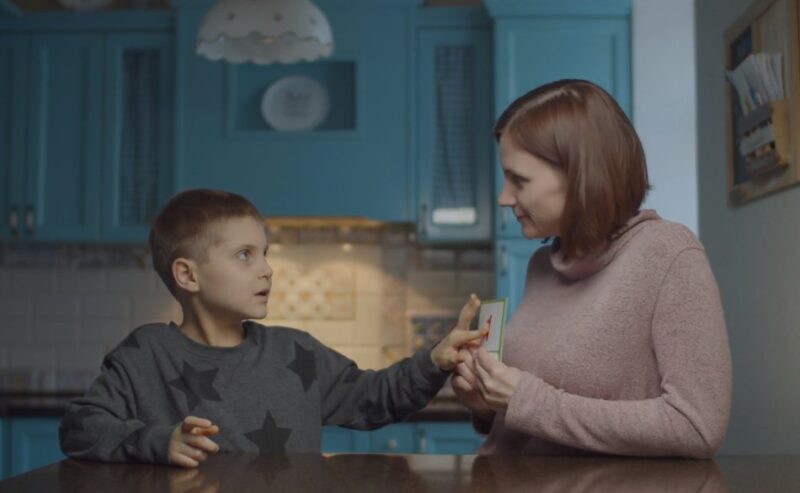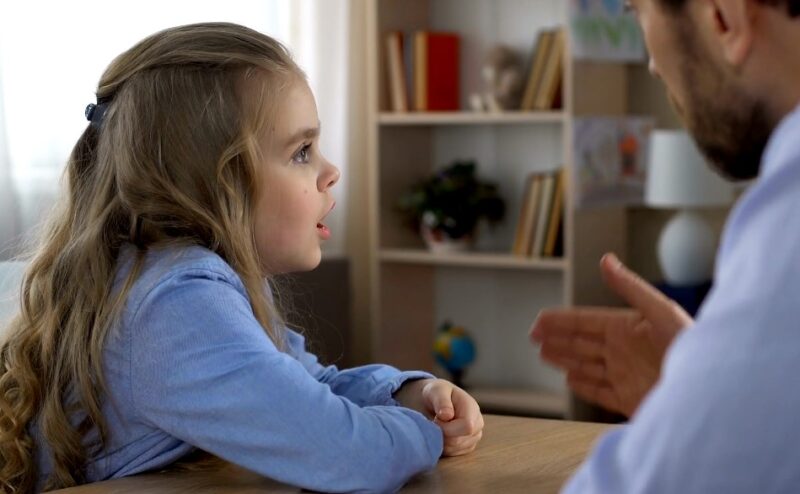The human brain is a marvel, processing vast amounts of information every second. But for some, this processing can be a challenge, leading to a range of behavioral and cognitive symptoms.
Two conditions that often come up in discussions about atypical neural processing are Sensory Processing Disorder (SPD) and Autism Spectrum Disorder (ASD). While they share some similarities, they are distinct in many ways. In this article, we’ll talk about these conditions, and shed light on their differences and intersections.
The Basics
What is Sensory Processing Disorder (SPD)?
Sensory Processing Disorder, often referred to as SPD, is a neurological condition where the brain struggles to process sensory information correctly. This can result in an individual being either hypersensitive (over-responsive) or hyposensitive (under-responsive) to sensory stimuli.
For instance, a child with SPD might find the tag on their shirt unbearably itchy or may not feel pain from a scraped knee. SPD can manifest in various ways, depending on which sensory system is affected. Some individuals might have difficulty processing visual information, while others might struggle with auditory or tactile stimuli.
It’s essential to understand that SPD is not about having poor eyesight or hearing but rather about how the brain interprets these sensory inputs.
Definition of ASD
Autism Spectrum Disorder, commonly known as Autism, is a developmental disorder characterized by challenges with social interaction, communication, and repetitive behaviors. The term “spectrum” in ASD signifies the wide range of symptoms and severity that individuals with this condition can exhibit.
While many people with ASD also experience sensory processing difficulties, it’s crucial to note that not everyone with sensory challenges has Autism. The sensory issues in Autism are just one aspect of a broader set of symptoms, which also includes social communication challenges and repetitive behaviors.
Overlapping Symptoms

Sensory Overloads
Both SPD and ASD can lead to sensory overload. This happens when an individual receives too much sensory information, causing them to feel overwhelmed. For someone with SPD, this could be triggered by a loud noise or a bright light.
In contrast, someone with ASD might experience sensory overload during social interactions, where they’re processing both sensory and social information simultaneously. Sensory overloads can lead to meltdowns, where the individual becomes extremely distressed.
It’s essential to differentiate between a tantrum and a meltdown. While tantrums often have a purpose (like seeking attention), meltdowns are a result of sensory or emotional overload and aren’t typically manipulative in nature.
Social Challenges
While SPD primarily affects sensory processing, it can indirectly lead to social challenges. For instance, a child who is hypersensitive to sound might avoid social situations where there’s a lot of noise, like birthday parties.
This can make them appear withdrawn or antisocial. On the other hand, social challenges are a core symptom of ASD. Individuals with Autism often struggle with understanding social cues, empathizing with others, and communicating their feelings.
These challenges are intrinsic to Autism and aren’t necessarily linked to sensory processing, although the two can intersect.
Diagnostic Differences

SPD
SPD is diagnosed based on the presence of significant challenges in processing sensory information that impact daily life. Occupational therapists often play a crucial role in the diagnosis, using standardized assessments and clinical observations.
It’s important to note that while SPD can co-exist with other conditions, it can also stand alone. The diagnosis of SPD focuses on the individual’s sensory experiences.
For instance, a child might be diagnosed with SPD if they consistently show extreme reactions to sensory stimuli, like refusing to wear certain fabrics or being unable to tolerate specific sounds, and these reactions interfere with their daily life.
ASD
The diagnosis of ASD is more complex, involving a combination of clinical observations, developmental history, and standardized assessments. While sensory challenges can be a part of the diagnostic criteria for Autism, they are considered alongside other core symptoms like social communication challenges and repetitive behaviors.
A multidisciplinary team, including psychologists, speech therapists, and pediatricians, often collaborates to diagnose ASD. The focus is on the individual’s developmental history, current behaviors, and the presence of the core symptoms of Autism.
Treatment Approaches
Therapies for SPD
For those diagnosed with SPD, occupational therapy (OT) is often the primary mode of treatment. OT focuses on helping individuals develop skills to cope with and manage their sensory challenges.
This might include sensory integration therapy, where individuals are exposed to sensory stimuli in a controlled environment to help them process and respond to them more effectively.
Another approach is the creation of a sensory diet, a tailored set of activities and interventions designed to provide the sensory input an individual needs. For example, a child who is undersensitive to touch might benefit from deep-pressure activities like bear hugs or using weighted blankets.
Therapies for ASD
While individuals with ASD might also benefit from occupational therapy, especially if they have sensory challenges, the treatment for Autism is more comprehensive. Behavioral therapies, such as Applied Behavior Analysis (ABA), can be effective in teaching social skills, reducing problematic behaviors, and promoting independence.
Speech and language therapy is also crucial for many with ASD, addressing communication challenges. Social skills groups can provide a platform for individuals with Autism to practice and develop their interpersonal skills in a supportive environment.
The Role of Early Intervention

Early intervention is crucial for individuals with SPD. Recognizing and addressing sensory challenges early on can prevent secondary issues, such as social withdrawal or academic struggles.
Children who receive early therapy can develop coping strategies that allow them to participate more fully in daily activities and social events. Moreover, early intervention can also provide parents and caregivers with the tools and strategies they need to support their children effectively.
This not only benefits the child but also reduces the stress and challenges faced by the family as a whole. For Autism, early intervention is often associated with better outcomes. Intervening during the critical developmental years can make a significant difference in a child’s trajectory.
Early therapies can help children with ASD develop essential communication, social, and cognitive skills. Furthermore, early intervention can also guide families in understanding and navigating the complexities of Autism.
Parents can learn strategies to support their children’s unique needs, advocate for them in educational settings, and build a supportive community around them.
The Importance of Support Systems

Support for Families with SPD
Having a child with SPD can be challenging for families. The unpredictability of sensory reactions, coupled with a lack of understanding from others, can be isolating. Support groups, both online and offline, can provide a platform for parents to share experiences, strategies, and resources.
Educational workshops can also be beneficial, helping families understand SPD better and equipping them with strategies to manage sensory challenges at home and in public settings. Schools and educators can play a role by being accommodating and understanding of a child’s sensory needs.
Assistance for Families with ASD
The challenges faced by families with a member on the Autism spectrum can be multifaceted, ranging from communication barriers to societal misconceptions. Support systems, including therapy groups, parent training programs, and community events, can be invaluable.
Autism advocacy organizations often offer resources, workshops, and community events that foster understanding and inclusivity. Schools can support students with ASD by offering specialized programs, training for educators, and fostering an inclusive environment for all students.
Common Misconceptions

Misunderstandings about SPD
Despite its prevalence, SPD is often misunderstood by the general public. Common misconceptions include the belief that children with SPD are simply “being difficult” or that they’ll “grow out of it.”
Such misunderstandings can lead to judgment and a lack of support from peers, educators, and even extended family. Awareness campaigns and educational initiatives are crucial to dispelling these myths.
By understanding the neurological basis of SPD and recognizing it as a legitimate challenge, society can become more accommodating and empathetic towards those affected.
Misconceptions about ASD
Autism, despite being more widely recognized, is still subject to numerous misconceptions. Stereotypes, such as the belief that all autistic individuals are savants or that they lack emotions, can be harmful and limiting.
Another common misconception is that Autism is caused by vaccines, a myth that has been debunked by extensive scientific research. Promoting accurate information about Autism, celebrating neurodiversity, and highlighting the individuality of those on the spectrum can help shift societal perceptions.
Personal stories and testimonials, shared through various media, can also play a pivotal role in humanizing the condition and fostering understanding.
The intersection of SPD and ASD

Co-occurring Conditions
It’s not uncommon for an individual to be diagnosed with both SPD and ASD. The sensory challenges seen in Autism can often align with the symptoms of SPD. However, while many individuals with Autism experience sensory processing difficulties, not all of them meet the criteria for SPD.
When both conditions co-exist, it’s essential to address each distinctly while also understanding their interplay. Tailored interventions can help manage the unique challenges presented by this overlap.
Differentiating the Two
While there’s an intersection between SPD and ASD, they remain distinct conditions. The primary difference lies in the core symptoms: social communication challenges and repetitive behaviors are central to Autism but not to SPD.
On the other hand, while sensory challenges are central to SPD, they’re just one aspect of the broader Autism spectrum. Understanding these distinctions is crucial for accurate diagnosis and effective intervention.
It ensures that individuals receive support tailored to their unique needs, rather than a one-size-fits-all approach.
FAQs:
What are the main components of sensory processing?
They include the five senses (taste, smell, hearing, seeing, and touch) and three other components: vestibular function, proprioception, and interoception.
How does the brain structure differ between children with autism and those with SPD?
Research has shown differences in the white matter tracts of the brain, with children with SPD showing more disconnection in tracts dealing with sensory issues than those with autism.
Are there any genetic links to SPD?
Some studies suggest a possible genetic element, especially if one twin has the disorder, the other might also have it.
How do sensory issues manifest in children with autism?
They may show hyper or hypo-reactivity to sensory input, which is listed as one of the behaviors associated with ASD in the DSM-5.
Is there a connection between the age of parents and autism?
Some factors suggest that having older parents might be biologically related to a higher risk of autism.
Conclusion
Both SPD and ASD highlight the vast spectrum of human neurodiversity. By understanding, accepting, and supporting these conditions, society can move towards a more inclusive future. Every individual, regardless of their neurological makeup, has the right to understanding, support, and the opportunity to thrive.
Knowledge is the first step towards understanding. By educating ourselves about conditions like SPD and ASD, we can dispel myths, foster empathy, and create a world where everyone is celebrated for their unique strengths and abilities.
The journey may be long, but with collective effort, a brighter, more inclusive future is within reach.
